World Ocean Day 2024 – catalysing action for seagrass

June 7, 2024 Content Team The theme of the 2024 World Ocean Day is catalyzing action for our ocean and climate. This recognises the fact that the health of the marine environment, including our globally declining seagrass meadows, requires significantly stronger local, national, and international action from both government and corporate leaders. In this article we consider collaborative approaches available to Governments to fulfill their responsibilities to seagrass conservation in light of recent commitments made at the Convention on Migratory Species (CMS). Multi-sector partnerships for seagrass conservation In February 2024, parties at the Convention on Migratory Species (CMS) COP14 in Uzbekistan passed a resolution that recognises the role that seagrasses play in supporting migratory species. This is the first time that seagrass’ important role for migratory species has been recogised within a global context with the resolution requiring signatory states to report on their progress towards seagrass-related biodiversity goals. The resolution presents a significant opportunity for signatory states and one which will require a collaborative and cross-sector approach given the requirement for governments to report on the location of seagrass meadows, the migratory species utilising them, and the threats facing these important habitats. The scale of this work will require significant investment which working in isolation is likely to render unachievable financially. Governments could instead opt for the creation of multi-sector strategic partnerships in deliver their reporting requirements and leverage sufficient funding towards this work. One approach available to Governments could be to develop strategic partnerships with NGOs and scientific institutions to develop ecosystem service credits or other new financing systems. These marine credits could subsequently be sold as offsets to corporations or governments whose activities are having a detrimental impact on our marine environment which would in turn fund the work required to reverse this damage. However, the effectiveness of any credit system would rely upon its responsible implementation and strong regulation. Seagrass meadow ecosystems play host to complex interactions between local communities and nature (social-ecological systems). Conservation finance solutions must therefore benefit these communities directly rather than channeling funding to businesses or third parties. Dugong feeding on seagrass, Great Fringing Reef, Red Sea Photo Credit: Anett Szaszi, Ocean Image Bank Dunlin (Calidris alpina) Credit: Emma ButterworthPhoto Credit: Emma Butterworth Brent Geese (Branta bernicla) Photo Credit: Charles Bagshaw The need for effective seagrass mapping to inform approaches One of the major challenges facing seagrass conservation and restoration is the availability of seagrass maps upon which the successful implementation of approaches such as ecosystem service credits will depend. Progress and developments continue to be made with mapping methods including satellite remote sensing and underwater vehicles however the current picture remains far from complete. Utilising the local knowledge of indigenous people, citizen scientists, and researchers to build on existing data and create reliable maps will be essential to working towards the resolution’s mapping goals. Working in partnership will enable COP14 signatory states to make steps towards global net gain for seagrass. You can read more here.
Communities are central to conservation
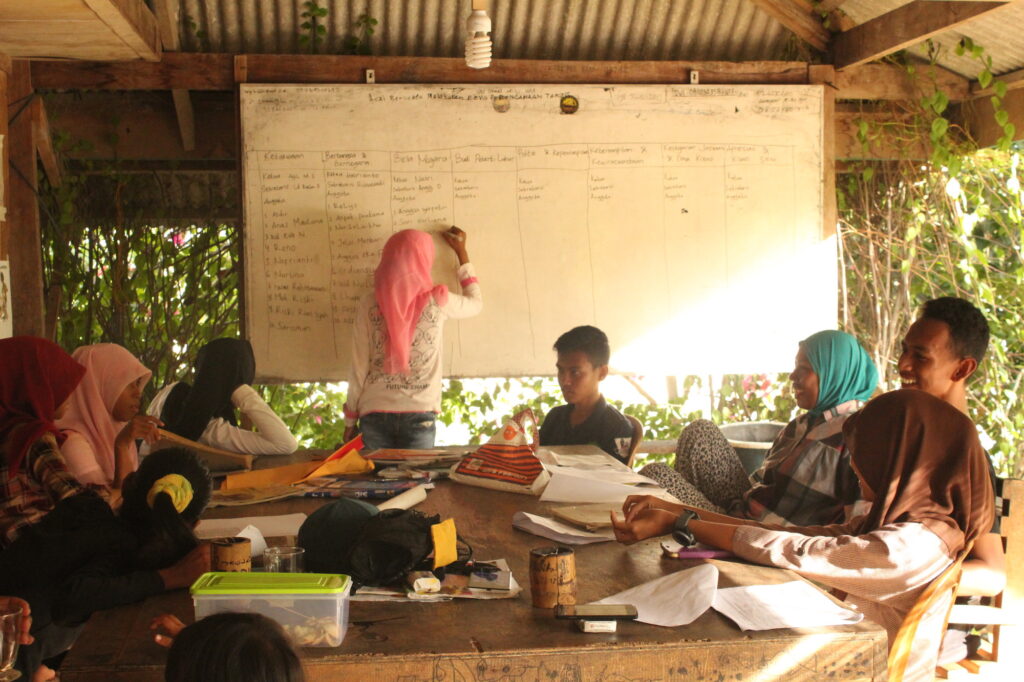
[vc_row type=”in_container” full_screen_row_position=”middle” scene_position=”center” text_color=”dark” text_align=”left” overlay_strength=”0.3″ shape_divider_position=”bottom” bg_image_animation=”none”][vc_column column_padding=”no-extra-padding” column_padding_position=”all” background_color_opacity=”1″ background_hover_color_opacity=”1″ column_link_target=”_self” column_shadow=”none” column_border_radius=”none” width=”1/1″ tablet_width_inherit=”default” tablet_text_alignment=”default” phone_text_alignment=”default” column_border_width=”none” column_border_style=”solid” bg_image_animation=”none”][vc_column_text]Earlier this week saw the release of the Edinburgh Declaration on post-2020 global biodiversity framework, a bold call to action urging Parties to the Convention on Biological Diversity to work more closely with communities in order to meet 20 biodiversity goals set out in the Aichi accord, signed 10 years ago in in Nagoya, Japan. The vision set out in the post-2020 global biodiversity framework of “Living in harmony with nature”, and the 2030 mission as set out in the Zero Draft document make one thing pretty clear. Conserving biodiversity, for people and the planet, cannot happen without people. [/vc_column_text][/vc_column][/vc_row][vc_row type=”in_container” full_screen_row_position=”middle” scene_position=”center” text_color=”dark” text_align=”left” overlay_strength=”0.3″ shape_divider_position=”bottom” bg_image_animation=”none”][vc_column column_padding=”no-extra-padding” column_padding_position=”all” background_color_opacity=”1″ background_hover_color_opacity=”1″ column_link_target=”_self” column_shadow=”none” column_border_radius=”none” width=”1/1″ tablet_width_inherit=”default” tablet_text_alignment=”default” phone_text_alignment=”default” column_border_width=”none” column_border_style=”solid” bg_image_animation=”none”][image_with_animation image_url=”8962″ alignment=”center” animation=”Fade In” border_radius=”none” box_shadow=”none” max_width=”100%”][/vc_column][/vc_row][vc_row type=”in_container” full_screen_row_position=”middle” scene_position=”center” text_color=”dark” text_align=”left” overlay_strength=”0.3″ shape_divider_position=”bottom” bg_image_animation=”none”][vc_column column_padding=”no-extra-padding” column_padding_position=”all” background_color_opacity=”1″ background_hover_color_opacity=”1″ column_link_target=”_self” column_shadow=”none” column_border_radius=”none” width=”1/1″ tablet_width_inherit=”default” tablet_text_alignment=”default” phone_text_alignment=”default” column_border_width=”none” column_border_style=”solid” bg_image_animation=”none”][vc_column_text]For me, the past few years have been pretty key in re-shaping what conservation truly is. The principal top-down conservationist architype, imposed by scientists and NGOs for decades, has been replaced by measures that include the rights and needs of local communities. Placing humans within ecosystems, rather than apart from them, is key if we are to live in harmony with nature. Back in 2013, my initial visions for what Project Seagrass should exist to achieve were purely natural. Not for people, but for seagrass sake. Of course, there’s nothing wrong with being so passionate about an organism that you simply don’t want to see it lost. But what I missed and what I failed to see back then was how important seagrass meadows were to communities. The more time I’ve spent with communities that live by and utilise seagrass meadows, the more I’ve realised how we as humans have re-shaped nature. We’ve become a central part of the ecosystem. In some ways, our goals to return nature to a “pristine” state is naïve. We’re blind to the fact we don’t really know what pristine is. But, more worryingly, our view of a pristine environment, is one without humans. This why I now focus on evidencing this with my own research, showing just how central communities are to conservation and sustainability goals, and how ignoring them actually undermines conservation and sustainability goals themselves.[/vc_column_text][/vc_column][/vc_row][vc_row type=”in_container” full_screen_row_position=”middle” scene_position=”center” text_color=”dark” text_align=”left” overlay_strength=”0.3″ shape_divider_position=”bottom” bg_image_animation=”none”][vc_column column_padding=”no-extra-padding” column_padding_position=”all” background_color_opacity=”1″ background_hover_color_opacity=”1″ column_link_target=”_self” column_shadow=”none” column_border_radius=”none” width=”1/1″ tablet_width_inherit=”default” tablet_text_alignment=”default” phone_text_alignment=”default” column_border_width=”none” column_border_style=”solid” bg_image_animation=”none”][vc_column_text]It’s all well and good setting time-bound targets and making specific promises and commitments. These are useful as motivational goals to help drive action in tackling biodiversity loss, but what has been holding us up, what has been putting on the brakes, is our inability to recognise people as part of the solution. The Edinburgh Declaration on post-2020 global biodiversity framework recognises this, and why I fundamentally support its call to action. At Project Seagrass, this has been on our mind lately. Without the partnerships we’ve made with communities, our projects could not be possible. Seagrass Ocean Rescue for example is just as much communities doing conservation as it is conservation for communities. We’ll be build on this as we move forward with the post-2020 global biodiversity framework.[/vc_column_text][/vc_column][/vc_row][vc_row type=”in_container” full_screen_row_position=”middle” scene_position=”center” text_color=”dark” text_align=”left” overlay_strength=”0.3″ shape_divider_position=”bottom” bg_image_animation=”none”][vc_column column_padding=”no-extra-padding” column_padding_position=”all” background_color_opacity=”1″ background_hover_color_opacity=”1″ column_link_target=”_self” column_shadow=”none” column_border_radius=”none” width=”1/1″ tablet_width_inherit=”default” tablet_text_alignment=”default” phone_text_alignment=”default” column_border_width=”none” column_border_style=”solid” bg_image_animation=”none”][image_with_animation image_url=”7689″ alignment=”” animation=”Fade In” border_radius=”none” box_shadow=”none” max_width=”100%”][/vc_column][/vc_row]
It’s an ill bird that fouls its own nest
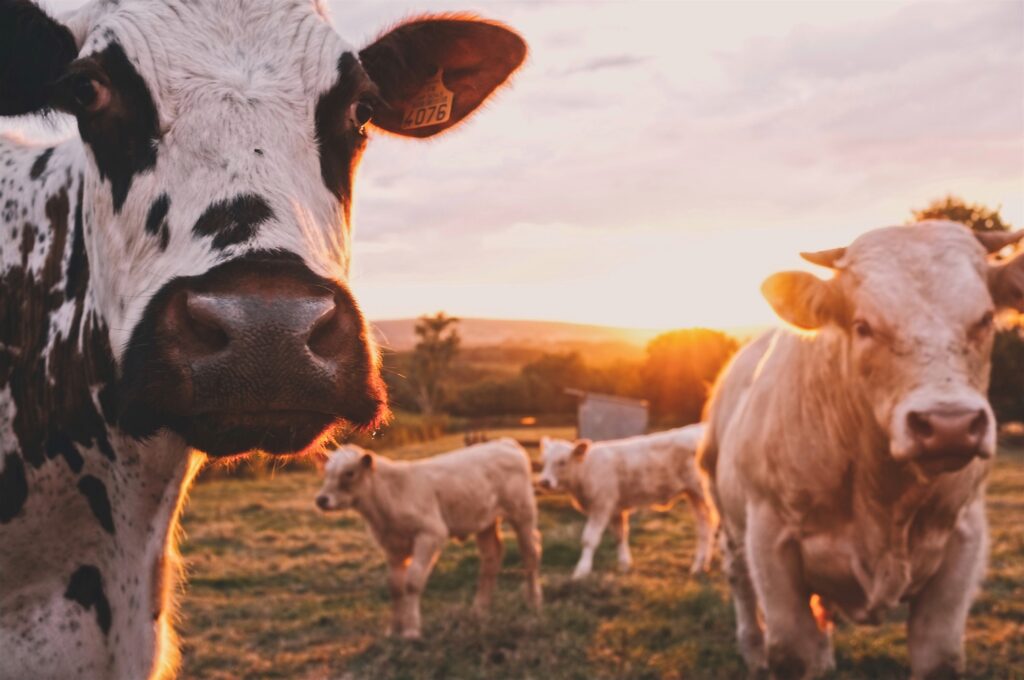
[vc_row type=”in_container” full_screen_row_position=”middle” scene_position=”center” text_color=”dark” text_align=”left” overlay_strength=”0.3″ shape_divider_position=”bottom” bg_image_animation=”none”][vc_column column_padding=”no-extra-padding” column_padding_position=”all” background_color_opacity=”1″ background_hover_color_opacity=”1″ column_link_target=”_self” column_shadow=”none” column_border_radius=”none” width=”1/1″ tablet_width_inherit=”default” tablet_text_alignment=”default” phone_text_alignment=”default” column_border_width=”none” column_border_style=”solid” bg_image_animation=”none”][vc_column_text] Nearly 30,000 tonnes of sewage containing human waste is to enter the UK despite potential problems for human health. Yet, what stinks for me is that sewage and livestock waste are driving seagrass loss across the UK – we already have a problem, and we don’t need to exacerbate this. Back in 2018, we released a study documenting this problem and called on the government to make changes – but water companies, some farmers and the Government have not, and it would appear are still not, doing enough to address theses risks. While the EU’s landmark legislation to improve bathing water quality has been a success in many places, much of what we do in the UK is woefully insufficient. Many seagrass meadows around the UK are in areas with designated EU protection. Protection on paper, but not in practice. Many seagrass meadows around the UK are polluted with nutrients derived from human sewage and livestock waste. Adding excessive amounts of nutrients to the environment, like spreading sewage liberally over fields, leads to those nutrients leeching out and into our rivers. Transported downstream to our coasts, these nutrients are a nightmare for seagrass leading to excessive growth of tiny algae called epiphytes which smother seagrass, leading to its death. Dead seagrass means no carbon sequestration, and in many cases dead seagrass means carbon emissions. Dead seagrass also means a loss of habitat for juvenile fish such as cod, herring and plaice, and dead seagrass means no coastal protection. Sewage puts all the benefits that seagrass provide to humans at risk. Farming is likely the UK’s leading cause of water pollution. Inefficiencies in the storage and disposal of sewage slurry mean that it ends up in rivers and coastal waters. Dr Andrew Singer, a senior scientist at the world-renowned Centre for Ecology and Hydrology, has said that there are no rivers in the UK that is safe to be swimming in. It’s clear then that there are some pretty systematic issues in the way we deal with sewage and livestock waste across the UK. Add on top of this the health issues that even the Environment Agency themselves acknowledge and you have a recipe for something that stinks. At the moment, we really don’t know whether spreading human sewage is safe or not for our food, according Alistair Boxall, a professor in environmental science at the University of York. It’s an ill bird that fouls its own nest.[/vc_column_text][/vc_column][/vc_row]
One man went to sow
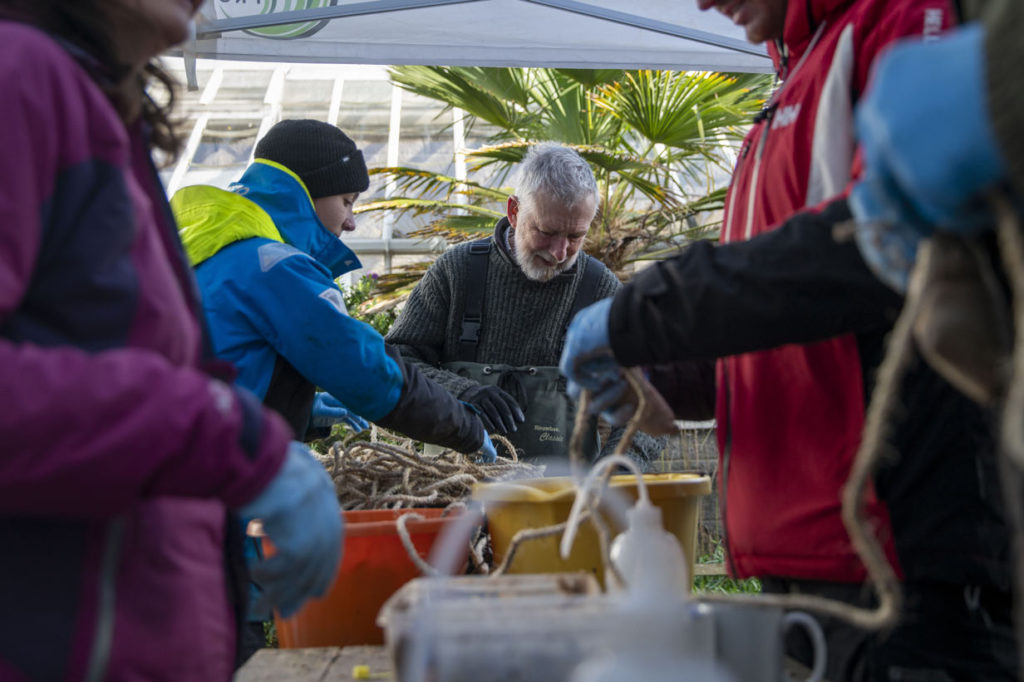
Guest blog by Mike Furness about his experience as a volunteer during seagrass planting week. It was smelly; it was noisy; it was heavy; it was cold. It was buzzing, vibrant and invigorating. Overwhelmingly it was about camaraderie, enthusiasm and shared purpose, and all set on the beautiful Pembrokeshire coast. At the end of February, I was privileged to be one of thirty or forty volunteers (the numbers varied daily) playing their individual parts in the climax act of a long-running, seagrass drama. We were going to help to sow a seagrass meadow, not just a small patch but a whole ‘field’. The logistics are daunting to think about; everything from feeding and accommodating the team to previously organising hundreds of school children to fill and tie 20,000 small bags on to 20km of ropes. Not to mention the harvesting and preparation of ¾ of a million seeds. An astounding effort. It would be wrong to say that everything ran flawlessly, but this is fieldwork and coping with the unexpected is part of the art behind the science, and the team coped magnificently. Immense teamwork both on land and at sea to get the seeds planted. I was first introduced to seagrass by taking too close an interest in my daughter’s marine biology studies. Her thesis involved endless hours of studying underwater video of seagrass beds and sometimes I was allowed to help. I don’t think that anyone could watch the multitude of life in a good sward without becoming an advocate for the importance of this vital habitat. So, when Evie, my daughter, first mentioned the meadow-sowing project and that volunteers were needed, I knew I had to be part of it. Arriving at Fort Dale on a crisp, blowy morning, with the wind at our backs, the smell wasn’t immediately apparent. The first impression was of organisation and industry; already half a dozen teams were bound together by their ropes, busily spooning seeds into pouches, topping them up, watering them and passing them on to the packer to carefully coil into a crate ready for soaking and dispatch to the boat team. Crates were rolling off the production line every few minutes, amid lots of banter and a backing track of 80’s pop classics. The productivity was impressive, but a quick glimpse into the temporary crate store quickly put this in perspective; this was a mammoth task. So, time to get stuck in. Mike getting ‘stuck in’. Quick introductions and we were underway. Conversation develops as the task gets familiar. “Where are you from? What has brought you here? Are you studying, employed, retired? What do you do?” Being thrown into a group of thirty or more would be difficult. Working four or five to a rope quickly establishes relationships – friendships – everyone knew the value of the task, everyone wanted to be there, there’s a shared purpose, a common goal, and everyone is freely giving of their time and enthusiasm. And with lots of jobs to do, there is an easy swapping of roles and ropes and before long you know everyone. For someone like me who spends his working life as a one-man band, the teamwork was a breath of fresh air. Ah, yes, the ‘fresh air’… Adding the smelly seeds. The seeds had been harvested in late summer and needed to spend several months rotting out of the harvested grass before being sown. By late February, they were ripe for planting and being kept in their own dedicated fridge. If you’ve ever walked through a geothermal area amidst the steam of fumaroles, you will know the smell that hits you when that fridge door is opened! It’s pungent. It’s sulphurous. It’s clinging. But, you know what, by the end of the day it virtually disappears. And on the morning of day two, when it hits you again, you begin to realise – that’s the smell of success, bring it on. Would I do it again, spend four days with a great bunch of people, in a beautiful location, working together to achieve something so important? Hmm, let me think about it! Mike
New life and new hope

Ah, the long awaited bank holiday weekend is almost here, but this time the circumstances are more than a little unusual. Instead of heading to the beach we will be staying at home, not just to look after ourselves but to support our NHS and it’s amazing staff. Easter is a time to celebrate Spring, it’s the time of year when everything in nature is changing and promising new life and new hope. However you celebrate, I think we can all agree it’s a pretty eggciting time! One of the iconic images we associate with Spring are eggs! Eggs, wonderful aren’t they? From hen eggs to chocolate eggs you’d think you’ve seen it all, well what about cuttlefish eggs? Ooo want to know more? Eggcellent! Why don’t you check out this 2016 blog post from our Director Ben, I think you’ll agree it’s worth getting eggcited about! Eve
The Isolated Conservationist

You are not alone! We are all having to take a pause from our chaotic lives in the midst of the COVID-19 pandemic. We must support our health care services and the incredible frontline workers by staying at home. Our ocean optimism and motivation to protect our planet does not stop for a lockdown. There are plenty of things that you can do from the safety of your home. Here are just a few ideas! Spring Clean! Perhaps you have some books, clothes or games you don’t want anymore? Staying at home is the perfect opportunity to have a big clear out. Once you’ve decluttered sell it at a car boot sale (when it’s safe to do so!). The money could then be used to catch a train to explore your nearest seagrass meadow or donate it to a conservation project, such as Project Seagrass. With the critical economic situation arising from COVID-19, it’s likely that many companies will have to take large budget cuts reducing what they can donate to small charities. Include your car in the clean-up- a lighter car uses less fuel! An Eco Makeover! Whilst having a spring clean try and identify products that could be switched for more eco-friendly ones- anything that goes down your drain or is chucked away will influence nature! Maybe switching cleaning products or try making your own?! How about making your own cosmetics such as shampoo bars or deodorant? Instead of buying new, maybe there’s an upcycling project you’ve always meant to do or get creative with handmade birthday presents. Why not try making eco-bricks or turning down the temperature of your washing machine? Seagrass Spotter! Take the extra time on your hands as an opportunity to go back through old holiday and beach snaps, there maybe some seagrass ones that could be uploaded to Seagrass Spotter to help build a global map of seagrass meadows. Encourage others to do the same! There are lots more citizen science projects you can get involved with like counting seabirds from your sofa. Plant Trees! For most working from home involves heavy internet use, so switch your search engine to ecosia and you’ll replant a forest in no time! Although Ecosia has had to reduce its tree planting during the pandemic, it plans to make up for lost time once safe to do so. Creative Conservationist! We have plenty of educational resources on the Project Seagrass website and shall be releasing more throughout social distancing. Check out our YouTube channel or our activities book. Maybe whilst you’re creating a rainbow coloured crab, you’ll have an eureka moment on other ways to Save Seagrass! This is also a chance to get artsy- maybe pick up those long forgotten paints for an underwater scene? Or work on those graphic design skills to make a seagrass awareness poster! Maybe you fancy yourself as a nature inspired poet or author? Eat for our seas! Enjoy having the time to try new things in the kitchen! Cutting down on your meat consumption is an easy way to help our earth. With less demand for meat comes less intensive farming, reducing the amount of excess nutrients from animal waste running in to our sea. The nutrients cause algal blooms which smother the seagrass, stopping sunlight reaching it for photosynthesis. Veggie grub also has a much lower carbon footprint. One of our favourite quick and easy comfort foods is roasted sweet potato and cauliflower tacos, you could even do a virtual taco night with friends! This recipe can easily be adapted to whatever’s left in the fridge- some peppers, onions or broccoli, maybe even mix in some leftovers from previous meals. Reducing food waste saves you money, takes pressure off our supply chains and helps protect our oceans- it’s a win all round! We’d love to hear of other ways people are keeping green, pop us a message and stay in touch whilst we’re all keeping distant. Best fishes, Evie!
2018 – From Wales to the World.
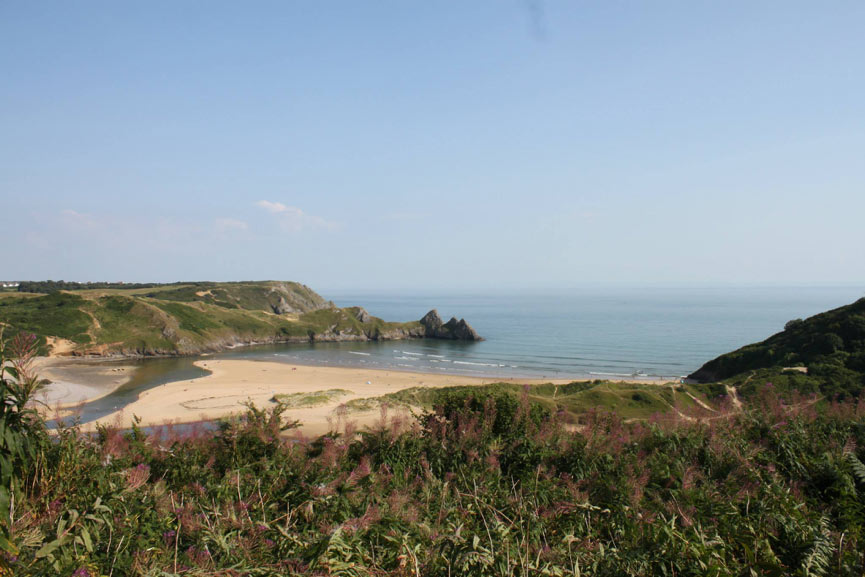
Happy New Year Team Seagrass! I can’t believe it’s 2018 already, and I’m sure that is a sentiment we all share! 2017 was an unbelievable year for all kinds of reasons, yet despite the crazy world we now seem to live in, for a few of us it has been largely a case of business as usual, and for the four of us as Project Seagrass, that consistency has been only been a good thing! Now I’m not going to spend this New Year’s blog recapping on what we got up to in 2017, I’ll just point you to our previous ‘4th Year’ blog post and save the rest for future reminiscing this summer, as we celebrate the BIG ‘5th Year’ as an NGO. We are certainly looking forward to this July! In 2018 we have BIG aspirations, we hope to release a GLOBAL version of our SeagrassSpotter application which will make it possible to record your seagrass sightings anywhere on this precious Blue Planet. Blue Planet. Green Seas. In 2018, we are taking Seagrass Spotter to the world. Since its initial launch in late 2015, we’ve been tinkering with the SeagrassSpotter app, expanding its sphere of use from just our local waters, to now encompass the North Atlantic Ocean, Caribbean Sea and Mediterranean Sea. With help from various end users, we’ve co-created a new version of the application that brings in elements that we, as scientists, had overlooked. Over the last 12 months the real challenge has been in developing the app for the regions around the Coral Triangle with its exceptional levels of biodiversity! In 2018, we are also looking forward to the 13th International Seagrass Biology Workshop in Singapore. The International Seagrass Biology Workshops are official World Seagrass Association events. World Seagrass Association members facilitate the organisation of these biennial meetings and the World Seagrass Association usually provides some financial support where possible. The International Seagrass Biology Workshop series have taken place around the world since Japan in 1993 (when I was just 9 years old!) and have evolved out of recognition of the global focus of seagrass issues. Just from looking at the locations of previous meetings it is clear that these workshops are truly international events! ISBW12: Nant Gwrtheyrn, Wales. 17 – 23 October 2016. ISBW11: Sanya, China. 7 – 10 November 2014. ISBW10: Rio de Janeiro, Brazil. 25 – 30 November 2012. ISBW9: Phuket–Trang, Thailand. 21 – 30 November 2010. ISBW8: Bamfield, Canada. 31 August – 5 September 2008. ISBW7: Zanzibar, Tanzania. 10 – 16 September 2006. ISBW6: Townsville, Australia. 24 September – 1 October 2004. ISBW5: Ensenada, México. 7–11 October 2002. ISBW4: Corsica, France. 25 September – 1 October 2000. ISBW3: Pangasinan, Philippines. 19 – 26 April 1998. ISBW2: Rottnest Island, Australia. 25 – 29 January 1996. ISBW1: Kominato, Japan. 24 – 26 August, 1993 Of course, the other big global event for Team Seagrass in 2018 is The 5th International Marine Conservation Congress in Kuching, Sarawak. Which is being held this summer between the 24th – 29th June. As a gentle reminder, the Call For Abstracts for this OPENS ON THE 5TH JANUARY 2018 (i.e. tomorrow!) so get submitting! Also, just as an FYI, you can keep up to date with the goings on of IMCC5 through their WordPress Blog. We hope we will be able to catch up with many of our colleagues at these events this year and we are always on the lookout for collaborations which will help catalyse positive change for our oceans. We’ve got a few innovative collaborations already pipelined (which I can’t reveal at this point!) but we will do as soon as they are all confirmed! So please get in touch with your ideas at hello@projectseagrass.org Despite all the adversity of the past 12 months I feel genuinely optimistic that this year will be a BIG ONE on the journey to put our “Green Seas” on the map. So keep up that Ocean Optimism, galvanise yourself for the year ahead, and remember what we are fighting for… In the words of David Attenborough; “It’s our green seas, not the blue, that bring life to our oceans.” Happy New Year! RJ
What does the future hold for seagrass?
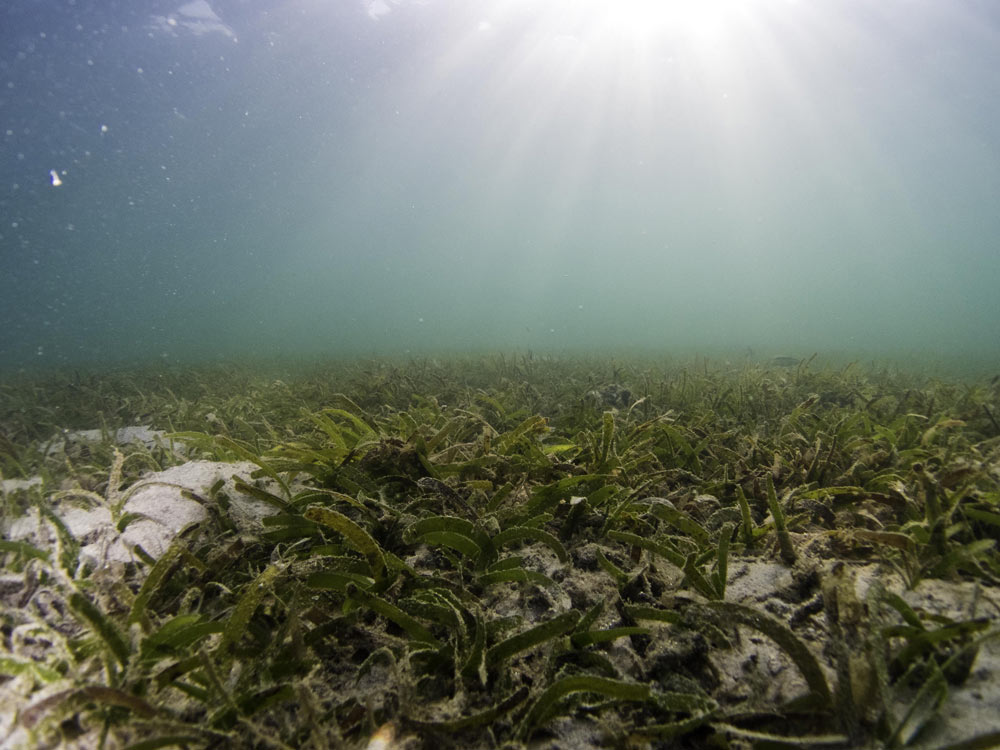
The savannahs of the seas – our humble seagrass meadows are in peril In its Green Seas episode, Blue Planet II introduced us to seagrass meadows. Scarcely touched upon in past media when compared to coral reefs, mangroves and even kelp forests, we learnt about the vast potential of these underwater grasslands to sequester carbon from our atmosphere through to providing habitat for charismatic marine life. But seagrass meadows are much more than this. Indeed, we would need a whole new landmark series to truly convey how vitally important these habitats are for biodiversity, people and the planet. Seagrass meadows are home to charismatic marine life, such as eagle ray’s which utilise seagrass meadows as juveniles in the Caribbean Our understanding of the importance of seagrass meadows is racking up. Recently we’ve discovered how seagrasses filter bacteria from coastal waters, helping to keep both people and coral reef’s healthy. We also now know that seagrass meadows are possibly the most underappreciated fishing habitats on earth, securing food supply and livelihoods. Seagrass meadows are a home, source of food and a feeding ground for numerous species of fish, invertebrates, reptiles, birds and mammals. They protect our shores from erosion, trapping sediment in place and slowing currents and produce oxygen that we breath. They truly are the oceans hero. Not the hero our planet deserves, but the hero our planet needs. Our green knight if you will. Women in Mozambique use fishing nets made from mosquito nets to collect fish within seagrass Despite all this, our seagrass meadows are in peril – unacknowledged, ignored in management and never the poster child of ocean conservation. What this has resulted in is a habitat in a state of emergency. From the shores of the UK to uninhabited islands within the Indian ocean, the tell-tale signs of man’s impact on seagrass meadows is visible. We simply don’t know how much seagrass there is globally. This also means we don’t know how much we’ve lost, bust estimates suggest that since the 1980’s we’ve lost over 35%. That equates to around a football field every hour. A scar on the oceans seabed. A small but visible impact from a boat anchor The threats we present to seagrass remains invisible, while we’re distracted by stories of deforestation and river pollution. Vast plumes of nutrient and sediment rich water flood onto our coastal seagrass meadows every day. Nutrients cause eutrophication, and opportunistic microscopic algae smother seagrasses, preventing the plants from obtaining food through photosynthesis. Elevated nutrients cause microscopic algae to smother seagrass leaves, reducing their ability to absorb light Similarly, sediment derived from coastal development and land reclamation burry the sensitive grasses, leaving nothing but a deserted wasteland. Contributing to this is the fact that fish species that might help seagrasses in their fight are gone. Exploited beyond belief and a result of seagrass meadows being ignored, time and time again when designing Marine Protected Areas. A static fish fence, or sero, used to funnel fish into a pen so that they can be collected daily has no preference for species or size Even in the UK, where we apparently “lead the way” in environmental protection, our seagrass meadows are in a perilous state. Despite being included within Special Areas of Conservation and Marine Conservation Zones, protection is woefully inadequate. But despite this doom and gloom there is hope for seagrass. Last year more than 100 scientists from 28 countries called for global action to protect seagrass meadows. It now seems that people are listening. It seems there is hope for these vital yet fragile ecosystems For our oceans, the futures bright and the futures green. Seagrass research and conservation are growing, and new information points to people as part of the answer. Citizen science has the potential to help members of the public to discover seagrass meadows while contributing to conservation at the same time. By making seagrass meadows a familiar species, we hope to use people to leverage change. While some governments are already looking to seagrass meadows as potential blue carbon hero’s and actively working on conservation strategies the reality is most are still naively unaware. For change to happen seagrass meadows can no longer be the ugly duckling of the conservation world and need to be given the limelight they deserve.

